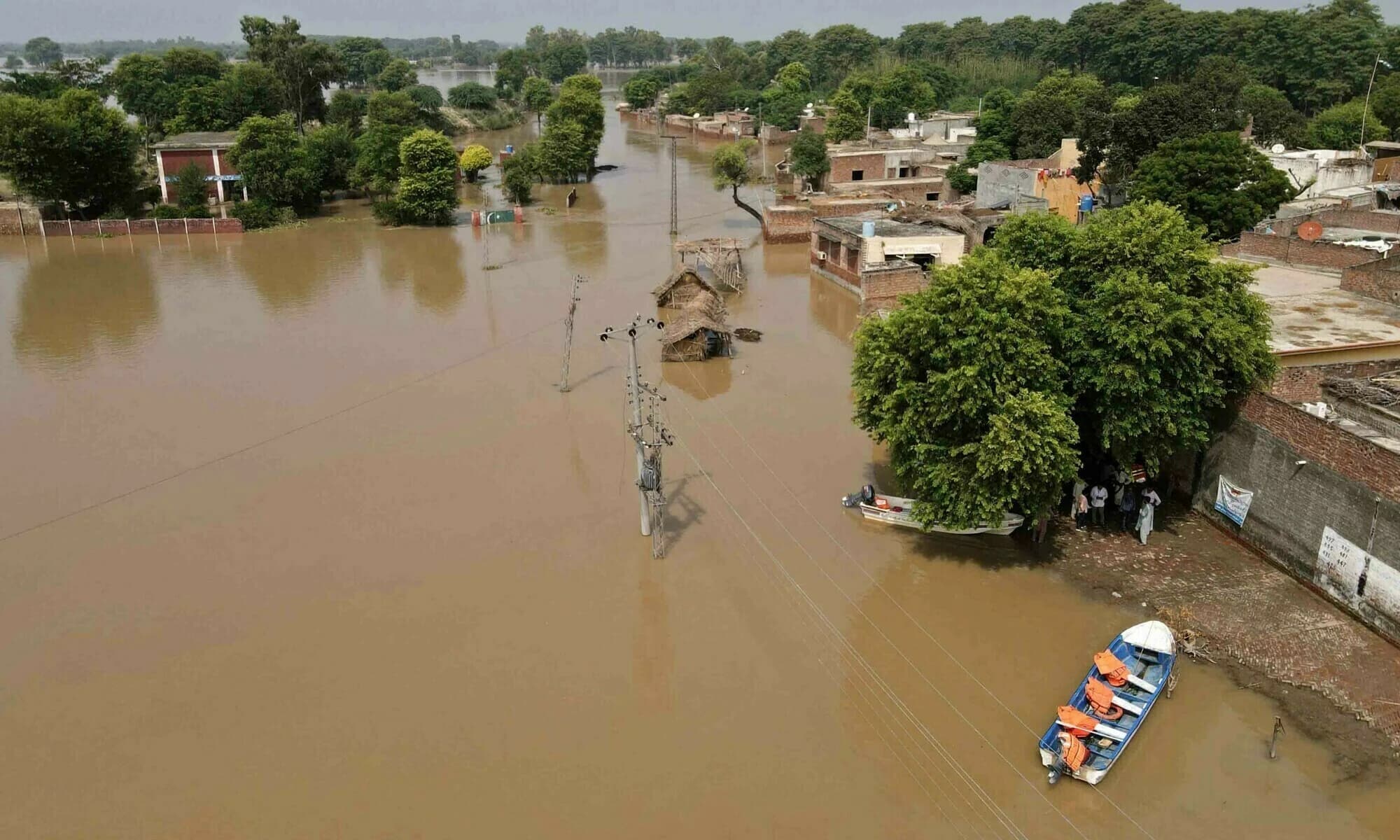© 2025 Roz UpdatesbyTETRA SEVEN

* All product/brand names, logos, and trademarks are property of their respective owners.
LAHORE — A state of emergency has been declared in Punjab as the Ravi and Sutlej rivers continue to rise above danger levels, triggering large-scale evacuations, extensive crop damage, and fears of further flooding. Authorities are calling it one of the most critical flood threats the province has faced in decades.
The Ravi and Sutlej are two of the five rivers of Punjab — a region whose name literally means "Land of Five Rivers." Originating in India, these rivers play a crucial role in sustaining Pakistan’s agricultural economy.
The Ravi River, originating in Himachal Pradesh, India, enters Pakistan near Lahore and flows through central Punjab. Historically, it has remained a modest river but has grown unpredictable in recent years due to erratic monsoon patterns and upstream water releases.
The Sutlej River, the longest of the five, originates from Tibet and flows through the Indian state of Punjab before entering Pakistan near Kasur. It is a major water source for irrigation systems, but during the monsoon season, it transforms into a flood-prone waterway.
Both rivers are seasonal and highly sensitive to rainfall, glacier melt, and dam activity upstream. When monsoon rains coincide with water releases from Indian reservoirs, their combined flow can quickly surpass safe limits.
According to the Pakistan Meteorological Department and the Provincial Disaster Management Authority (PDMA), the Ravi and Sutlej have both exceeded their critical thresholds this week.
Ravi River surpassed 120,000 cusecs in multiple areas, particularly around Narowal and Lahore’s outskirts.
Sutlej River surged past 220,000 cusecs at Ganda Singh Wala, impacting Kasur and adjacent districts.
Floodwaters have begun to overrun protective embankments, inundating nearby villages, farmlands, and infrastructure.
More than 210,000 people have been evacuated from flood-prone areas across Punjab. The PDMA and military units have jointly established over 800 emergency shelters to house the displaced.
PDMA Director General Imran Qureshi stated:
“We are dealing with a fast-moving disaster. Our teams are on the ground rescuing stranded citizens and providing essential supplies.”
To support rescue efforts, the Pakistan Army has been deployed in six districts including Lahore, Kasur, Narowal, Okara, Sialkot, and Faisalabad. Boats, helicopters, and mobile medical units have been dispatched to remote areas cut off by rising waters.
ISPR confirmed over 5,000 personnel are engaged in ongoing operations.
India’s release of water from the Bhakra and Pong dams on August 25, after days of heavy Himalayan rainfall, has intensified downstream flooding in Pakistan. Though the releases were officially communicated, Pakistani officials argue they lacked sufficient coordination.
Foreign Office spokesperson Mumtaz Zahra Baloch commented, “While notification is a treaty obligation, coordination in timing and volume is vital. Sudden surges overwhelm our downstream infrastructure.”
Hydrology experts compare the current flood situation to the catastrophic 1988 deluge, when similar river overflow patterns displaced nearly 1.3 million people.
Dr. Ahsan Mehmood, Professor of Environmental Sciences at the University of Agriculture Faisalabad, explained: “The rivers' behaviors have become erratic due to climate change. What used to be rare occurrences are now seasonal realities.”
Relief operations face numerous obstacles, including damaged roads, washed-out bridges, and disrupted power lines. Some riverine communities remain unreachable, relying on drone drops and airdrops for food and medicine.
Humanitarian organizations like the Edhi Foundation, Pakistan Red Crescent, and Al-Khidmat Foundation have mobilized volunteers and resources. Students and citizens from cities like Lahore and Gujranwala are also stepping in to help with distribution efforts.
Weather forecasts suggest another strong monsoon system may hit northern Pakistan over the weekend. If it materializes, river levels could rise even further, compounding the crisis.
Red alerts have been issued for all districts along the Ravi and Sutlej belts. Residents are being urged to remain alert, follow official instructions, and evacuate when advised.
Punjab Chief Minister Maryam Nawaz visited Kasur and Narowal districts today, announcing a Rs. 1 billion emergency relief package.
“We will not abandon our people. Rescue, relief, and compensation will continue until every affected family is secure,” she pledged.
An emergency hotline (1129) has been activated for real-time updates, rescue requests, and public awareness.
This flood emergency has laid bare the fragility of Punjab’s disaster preparedness systems and the increasing volatility of regional water politics.
With lives, homes, crops, and infrastructure hanging in the balance, Pakistan’s response in the coming days will determine the long-term social and economic toll of this calamity. As the monsoon continues, the eyes of an anxious nation remain fixed on the rivers—and the rain.

22 November 2025

18 November 2025
No comments yet. Be the first to comment!